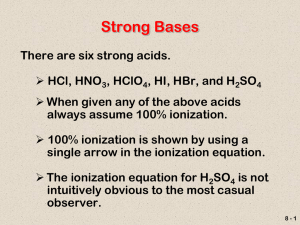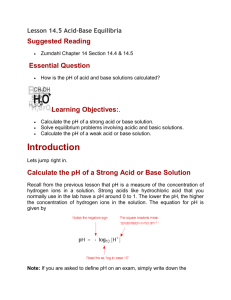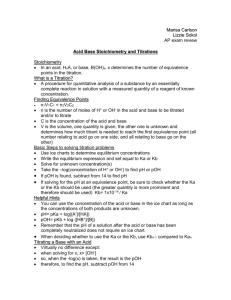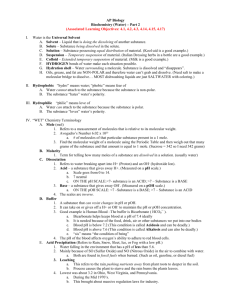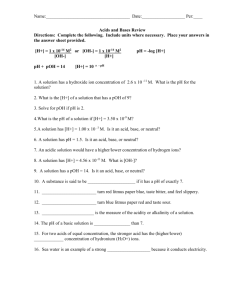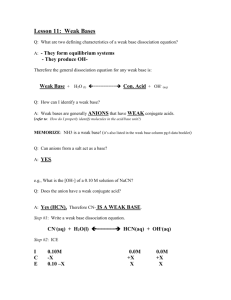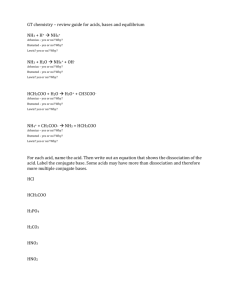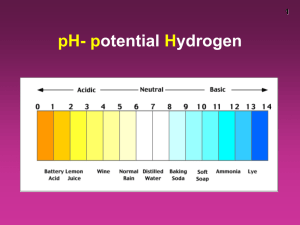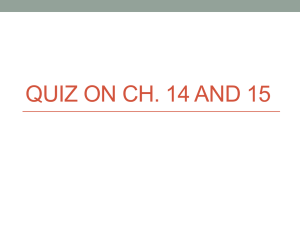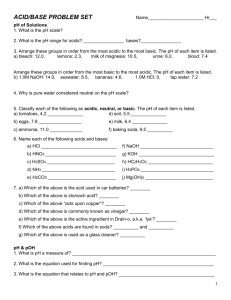Strong and Weak Bases – Notes
advertisement
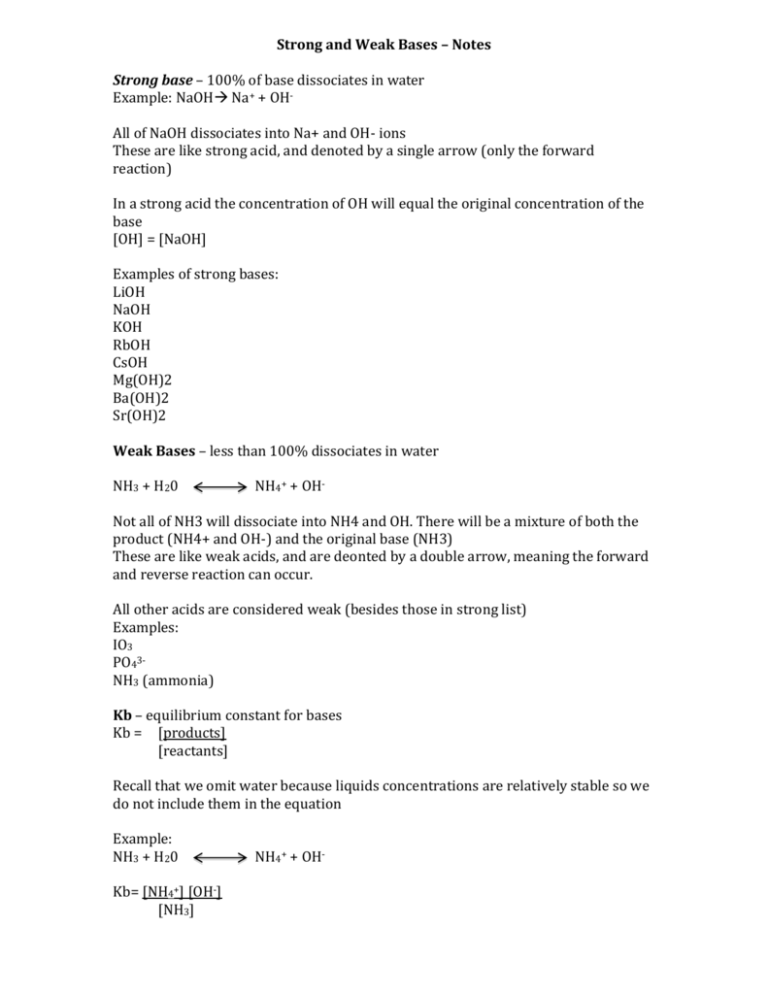
Strong and Weak Bases – Notes Strong base – 100% of base dissociates in water Example: NaOH Na+ + OHAll of NaOH dissociates into Na+ and OH- ions These are like strong acid, and denoted by a single arrow (only the forward reaction) In a strong acid the concentration of OH will equal the original concentration of the base [OH] = [NaOH] Examples of strong bases: LiOH NaOH KOH RbOH CsOH Mg(OH)2 Ba(OH)2 Sr(OH)2 Weak Bases – less than 100% dissociates in water NH3 + H20 NH4+ + OH- Not all of NH3 will dissociate into NH4 and OH. There will be a mixture of both the product (NH4+ and OH-) and the original base (NH3) These are like weak acids, and are deonted by a double arrow, meaning the forward and reverse reaction can occur. All other acids are considered weak (besides those in strong list) Examples: IO3 PO43NH3 (ammonia) Kb – equilibrium constant for bases Kb = [products] [reactants] Recall that we omit water because liquids concentrations are relatively stable so we do not include them in the equation Example: NH3 + H20 Kb= [NH4+] [OH-] [NH3] NH4+ + OH- Calculations using Kb **(all very similar to Ka so don’t stress that there are MORE calculations) Example 1: what is pH of a 0.1 solution of ammonia (NH3). The Kb=1.77x10-5 Step 1: write ionization for ammonia NH3 + H20 NH4+ Step 2: make an ICE chart and fill in with information you know NH3 + H20 NH4+ + OH+ OH- I 0.1 0 0 C -(insignificant) +x +x E 0.1 x x Recall that x will be small in comparison to 0.1 so we can just omit it in the equilibrium calculation for NH3. Step 3: Find OH- using Kb Kb= [NH4+] [OH-] [NH3] 1.77x10-5 = (x)(x) 0.1 1.77x10-5(0.1) = x2 1.77x10-6 = x2 √1.77x10-6 = x 1.33x10-3 = x Step 4: find pOH using [OH] pOH = -log[OH-] pOH = -log[1.33x10-3) pOH= 2.89 Step 5: find pH using pOH pH + pOH = 14 14-2.89 = pH 11.11 = pH Example 2: A 0.2 M solution of generic weak base (call it B) has a a pH of 10.25. Find Kb. Step 1: write ionization for ammonia B + H20 BH+ + OHStep 2: make an ICE chart and fill in with information you know B + H20 BH+ + OH- I 0.2 0 0 C (insignificant) E 0.2 Recall that BH and OH concentration will be small in comparison to 0.2 so we can just omit it in the equilibrium calculation for B Step 3: find pOH using pH 14-pH = pOH 14-10.25 = pOH 3.75 = pOH Step 4: find OH using pOH pOH = -log[OH-] 3.75 = -log[OH-] 1.78x10-4 = [OH] (can fill this in ice chart ) B + I C E H20 0.2 - (insignificant) 0.2 BH+ 0 +1.78x10-4 1.78x10-4 Step 5: Find Kb Kb= [BH+] [OH-] [B] Kb = (1.78x10-4) (1.78x10-4) (0.2) Kb= 1.6x10-7 Complete questions on Worksheet #9 + OH0 +1.78x10-4 1.78x10-4
